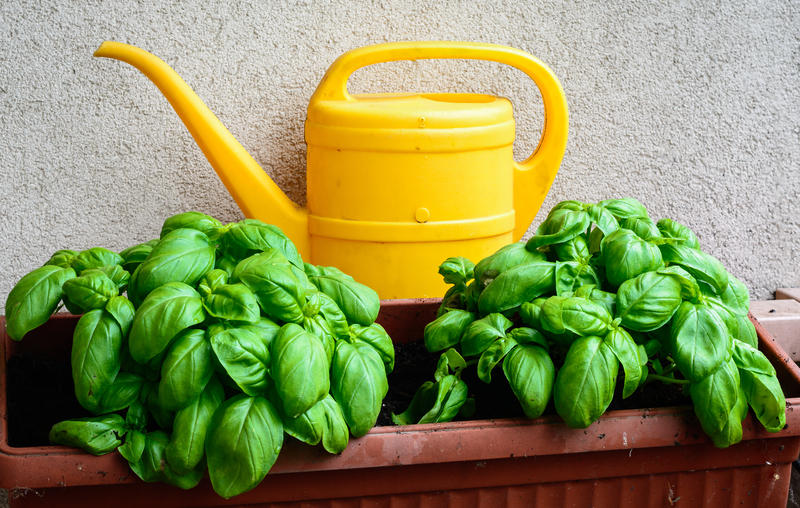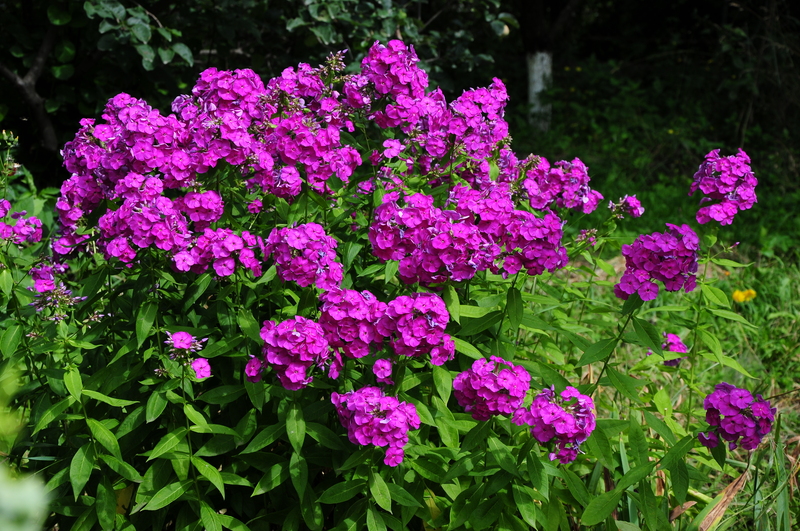Tending Gardens, Tending the Planet: A Climate Perspective
Posted on 15/09/2025
Tending Gardens, Tending the Planet: A Climate Perspective
Gardening is more than just a tranquil pastime or a source of fresh produce; it is an act with profound implications for our planet's health. As the threats of climate change loom larger, from extreme weather to soil degradation, the humble act of tending gardens emerges as a critical intervention. This comprehensive article explores how gardening, no matter the scale, can become a powerful tool in climate change mitigation and adaptation; it analyzes the science, techniques, and community benefits alongside expert advice on actionable, climate-savvy gardening practices.
Understanding the Connection: Gardens and the Climate Crisis
The relationship between gardening and the planet's climate health is both complex and impactful. Here's why:
- Gardens serve as carbon sinks, absorbing carbon dioxide (CO2) from the atmosphere and storing it in plant tissues and soils.
- Healthy gardens foster biodiversity, creating habitats for pollinators, beneficial insects, and wildlife threatened by urbanization and monoculture farming.
- Urban gardens help regulate temperatures, reducing the "urban heat island" effect and making cities more resilient to heatwaves.
- Gardening reduces food miles, cutting emissions from the transportation and storage of produce.
- Soil stewardship in gardens improves water retention and soil fertility, reducing the need for synthetic fertilizers that contribute to greenhouse gas emissions.
In short, gardening for the climate is more than symbolic--it's a hands-on climate solution grounded in ecology, science, and community action.

The Science: How Gardens Influence Climate
Carbon Sequestration in Gardens
Plants play a vital role in pulling carbon dioxide from the air and locking it away through photosynthesis. Well-tended gardens--especially those rich in woody plants, perennial vegetables, and healthy soils--can capture significant quantities of carbon over time.
- Trees and shrubs, even in small yards, serve as long-term carbon stores.
- Composting garden waste returns carbon-rich material to the soil, boosting organic matter and microbial activity for further sequestration.
- Cover cropping and mulching minimize soil disturbance, helping soils retain carbon and nutrients.
Biodiversity: A Shield Against Climate Change
Resilient gardens support diverse communities of plants and creatures. Biodiversity is essential for ecosystem stability and climate resilience because:
- Mixed plantings are less susceptible to pests and diseases, reducing reliance on chemical controls.
- Varied root systems improve soil structure and foster water retention.
- A range of flowering plants supports bees and pollinating insects year-round, critical for food security and planetary health.
Urban Gardens: Cooling Cities and Cleaning Air
With over half the world's population now living in cities, urban gardens are key to adapting to--and fighting--the effects of a warming climate.
- Community gardens and green roofs lower ambient temperatures, reduce stormwater run-off, and filter airborne pollutants.
- Pocket parks and planted boulevards act as microclimate buffers, offering shade and protecting residents from heat waves.
Gardening Practices to Support Climate Health
Soil Health: The Foundation of Climate-Smart Gardens
Soil is not only the base for plant life but also a significant reservoir of carbon. Protecting and enhancing soil health is one of the most effective ways to foster climate resilience in your garden.
- Minimize tilling: Soil disturbance releases stored carbon; instead, opt for no-dig or low-till methods.
- Use organic mulches: Such as straw, wood chips, or leaf mold--to suppress weeds, retain moisture, and feed soil microbes.
- Compost kitchen and garden waste: Homemade compost adds nutrients and structure to soil, eliminating the need for synthetic fertilizers.
- Grow cover crops: Legumes, clover, and rye protect soil in the off-season, fix nitrogen, and add organic matter.
Plant Choices: Selecting for the Climate
Choosing the right mix of plants can maximize your garden's climate benefits and resilience.
- Native plants are adapted to local climate and require less water and maintenance.
- Drought-tolerant species reduce outdoor water demands as rainfall patterns shift due to climate change.
- Perennial crops like asparagus, rhubarb, or berry bushes store more carbon and persist for years, requiring less soil disruption and input.
- Trees and large shrubs provide shade, habitat, and act as carbon banks in any garden, large or small.
Water Wisdom: Efficient Use and Conservation
Water stress is expected to worsen as global temperatures rise. Smart irrigation--combined with soil stewardship--can significantly reduce your garden's water footprint.
- Install drip irrigation or soaker hoses to minimize evaporation and deliver water directly to plant roots.
- Mulch intensively to reduce surface water loss and maintain soil coolness.
- Collect rainwater with barrels or cisterns to use during dry spells.
- Select plants adapted to your rainfall levels to reduce supplemental watering.
Reducing Waste: Composting and Circularity
Every garden produces organic waste--but this "waste" is also a resource. Closing the nutrient cycle with composting is a climate action you can take at home.
- Compost all plant trimmings, leaves, and suitable kitchen scraps.
- Use compost as mulch or soil amendment to further sequester carbon and feed your plants.
- Engage with municipal composting programs or local community gardens to handle excess materials.
Community Gardens: Growing Social & Climate Resilience
The Climate Impact of Collective Gardening
Community gardens transform underutilized urban land into productive green spaces. They offer environmental, social, and climate benefits, including:
- Local food production: Reduces the carbon footprint associated with transporting and storing food.
- Shared composting initiatives: Manage organic waste while educating citizens about the importance of circularity and sustainability.
- Biodiversity corridors: Connect disparate green spaces, allowing pollinators and urban wildlife to thrive.
- Heat mitigation: Large, plant-rich areas lower city temperatures and buffer neighborhoods against heatwaves.
- Community engagement and education: Fosters environmental stewardship and climate awareness at a grassroots level.
Social Benefits of Garden-Based Climate Action
Beyond environmental outcomes, tending gardens for the climate strengthens communities in meaningful ways. Participants experience:
- Improved food security and access to nutritious, fresh produce.
- Opportunities for intergenerational learning, exchanging traditional and innovative gardening knowledge.
- Enhanced mental health from contact with nature, physical activity, and cooperative projects.
- Greater resilience to climate shocks such as food shortages, heatwaves, and floods.
Case Studies: Gardens Making a Difference Globally
Havana, Cuba: Urban Gardens Feed a City
When Cuba faced food shortages in the 1990s, the capital, Havana, transformed vacant lots into communal gardens, or "organoponicos." Today, these spaces supply over half the city's produce, reduce urban heat, and have created a resilient, low-carbon urban food system admired worldwide.
Melbourne, Australia: Green Roofs Cool the City
Faced with rising urban temperatures, Melbourne incentivized green roofs--many of which now also serve as productive vegetable gardens. These planted roofs insulate buildings, cut energy use, and absorb CO2, providing climate benefits both locally and globally.
Detroit, USA: Gardens Reclaim Industrial Wasteland
Detroit's residents have turned thousands of abandoned lots into community gardens and small urban farms, improving soil health, increasing biodiversity, and offering climate-friendly food production while bringing hope and renewal to neighborhoods.
Climate-Smart Gardening: Practical Tips for Every Gardener
Start Small, Think Big
- Even a window box or balcony planter can serve as a micro carbon sink and pollinator habitat.
- Container gardens are ideal for urban dwellers wanting to make a climate impact with limited space.
Seek Out Climate-Resilient Plant Varieties
- Research native plants and heritage varieties that thrive in changing climatic conditions.
- Mix annuals with perennials and include trees or shrubs when possible.
Join or Support Local Green Initiatives
- Volunteer at a community garden, or donate seeds, tools, or time.
- Advocate for green spaces and sustainable development in your city or town.
Invest in Learning and Sharing Knowledge
- Attend local workshops or read about climate-resilient gardening techniques.
- Share your successes and lessons with neighbors and friends--community is at the heart of climate action.

The Future: Scaling Up Climate Action through Gardening
As climate challenges intensify, every garden can become a beacon of hope and resilience. The cumulative power of millions of gardens--whether in backyards, schools, rooftops, or empty lots--can help draw down carbon, build healthy soils, sustain pollinators, and reconnect people to their planet.
- Policy support for urban agriculture and green infrastructure can amplify the benefits of gardens citywide.
- Corporate and institutional green roofs and edible landscapes are scaling up the movement in business districts and campuses globally.
Conclusion: Tending Gardens, Healing the Earth
To tend a garden is to actively care for the earth. With thoughtful choices and regenerative techniques, gardens no longer stand apart from the discussion of climate change--they become pivotal to our adaptation and collective healing. From carbon sequestration to social resilience, from cooling shade to the bounty of a homegrown tomato, the benefits return many times over. By tending gardens, we truly tend the planet.
Take up your trowel and join a global movement: every act of planting, nurturing, and sustaining life in the soil is a step toward a stable climate and a flourishing future--for us, and for generations to come.



